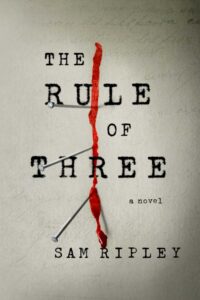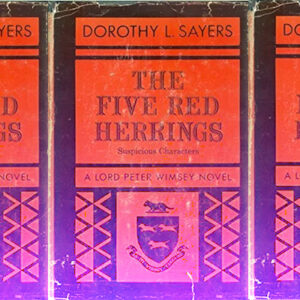Grieving over seemingly unrelated tragedies, Amy begins to believe that not only there is a sinister connection that links the deaths, but if she cannot untangle the mysterious urban legend known as the Rule of Three she will be the next person to die. However, when Amy cannot be certain what she is experiencing is even real, how can she hope to understand it before it’s too late?
Don’t forget The Rule of Three
It’s coming for you
Like it came for me.
There’s a moment in the book wherein a character is told it’s unlucky to walk over a row of three drain covers. This is something I was told as a child by a friend when I was about to do the same on the walk home from school one day. I don’t recall the exact words that were said to me, although I still remember the boy’s name, but there was so much conviction in his statement that even if I didn’t quite believe him, I didn’t want to risk it. Like everyone else, I knew the basics of such superstitions: black cats, ladders and so on, but this was somehow different. Maybe because I was impressionable at that age, I began to avoid walking over three drains from that point onwards. I suppose it was like a habit and not something I thought too much about. However, whether I realised it or not, I was taking it way too seriously to the point it very nearly ended in tragedy.
Weeks later, I was once again walking home from school, this time with my brother. He is a year older than me and was altogether more sensible and much less easily led at that age. He had no qualms at all about walking over three drains and thought my fear of them was not only unnecessary but outright nonsense. As he neared a row of three drain covers, I warned him of the approaching danger and he laughed at me. I didn’t care about the mockery, only about his safety – I didn’t want him to have bad luck any more than I wanted it for myself – so, as he reached the point of no return, I intervened. In order to save him from his fate, I gave him a hard shove to knock him aside.
This sent him stumbling off the pavement and into the road, almost into the path of a passing truck.
Naturally, I received no thanks for “saving” him from bad luck.
Fast forward a few decades and I consider myself rational, pragmatic, and grounded. I look back and breathe a sigh of relief that I didn’t push my brother a little harder or a little sooner. I think it was a lesson in how powerful beliefs can be for us and how they can lead us in directions we would otherwise have avoided. It doesn’t matter the nature of that belief. It could be superstitious, religious, ideological, or even what music we think is best. Belief can shape who we are for good or ill. And even if I don’t worry about walking over a row of three drain covers these days, they will still draw my gaze and I can feel that old fear deep inside me, dampened and yet not forgotten.
Like the drain covers, like black cats and ladders, I also heard that bad things happen in threes. Sadly, I can’t recall when I first heard of this but for a long time I was of the belief that it began during the trench fighting of the First World War. Soldiers had learned not to share a match between three of them because by the time the third man had lit up his cigarette, an enemy sniper would have spotted the burning match and zeroed in on that third man. A harrowing thought and one that stayed with me. Much later, when I began to write The Rule of Three, I researched this idea and discovered that it originates in the Boer War instead. Although, I imagine by the time of the First World War the soldiers in Flanders Fields were heeding this lesson learned the hard way in Africa.
During my research, I similarly learned about apophenia, which is the tendency to make connections between unrelated events. Humans seem to be hardwired to find patterns in all aspects of life, even if they’re only coincidences. If that pattern suggests you are going to die like other people close to you, can you convince yourself it’s only apophenia or do try and do something about it?
This is the dilemma facing the protagonist in The Rule of Three. She comes to believe she is doomed to die unless she can find a way to change her fate. But how is such a thing even possible? And if she really is condemned to die because an urban legend says so, why is it even happening in the first place?
***


















